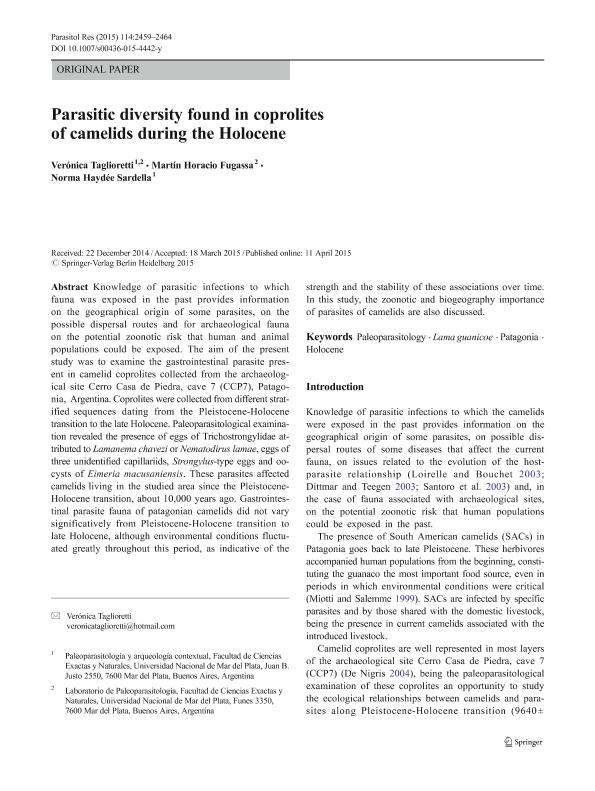Artículo
Parasitic diversity found in coprolites of camelids during the Holocene
Fecha de publicación:
07/2015
Editorial:
Springer
Revista:
Parasitology Research
ISSN:
0932-0113
e-ISSN:
1432-1955
Idioma:
Inglés
Tipo de recurso:
Artículo publicado
Clasificación temática:
Resumen
Knowledge of parasitic infections to which fauna was exposed in the past provides information on the geographical origin of some parasites, on the possible dispersal routes and for archaeological fauna on the potential zoonotic risk that human and animal populations could be exposed. The aim of the present study was to examine the gastrointestinal parasite present in camelid coprolites collected from the archaeological site Cerro Casa de Piedra, cave 7 (CCP7), Patagonia, Argentina. Coprolites were collected from different stratified sequences dating from the Pleistocene-Holocene transition to the late Holocene. Paleoparasitological examination revealed the presence of eggs of Trichostrongylidae attributed to Lamanema chavezi or Nematodirus lamae, eggs of three unidentified capillariids, Strongylus-type eggs and oocysts of Eimeria macusaniensis. These parasites affected camelids living in the studied area since the Pleistocene-Holocene transition, about 10,000 years ago. Gastrointestinal parasite fauna of patagonian camelids did not vary significatively from Pleistocene-Holocene transition to late Holocene, although environmental conditions fluctuated greatly throughout this period, as indicative of the strength and the stability of these associations over time. In this study, the zoonotic and biogeography importance of parasites of camelids are also discussed.
Palabras clave:
Holocene
,
Lama Guanicoe
,
Paleoparasitology
,
Patagonia
Archivos asociados
Licencia
Identificadores
Colecciones
Articulos(CCT - MAR DEL PLATA)
Articulos de CTRO.CIENTIFICO TECNOL.CONICET - MAR DEL PLATA
Articulos de CTRO.CIENTIFICO TECNOL.CONICET - MAR DEL PLATA
Citación
Taglioretti, Verónica; Fugassa, Martín Horacio; Sardella, Norma Haydee; Parasitic diversity found in coprolites of camelids during the Holocene; Springer; Parasitology Research; 114; 7; 7-2015; 2459-2464
Compartir
Altmétricas




